|
 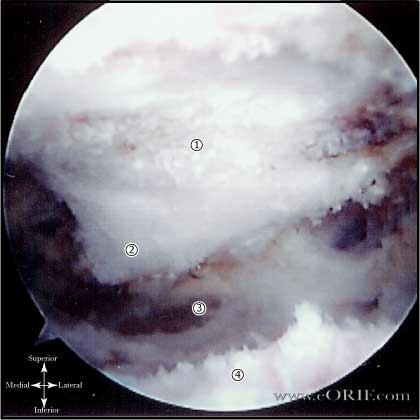
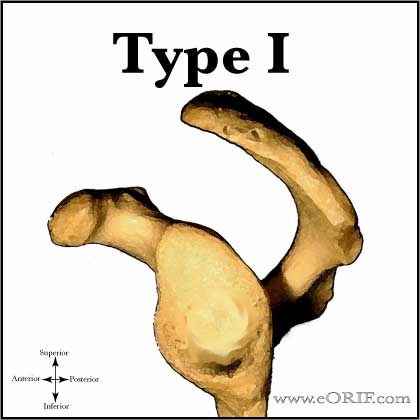

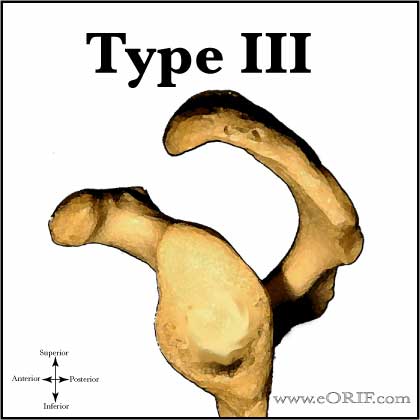

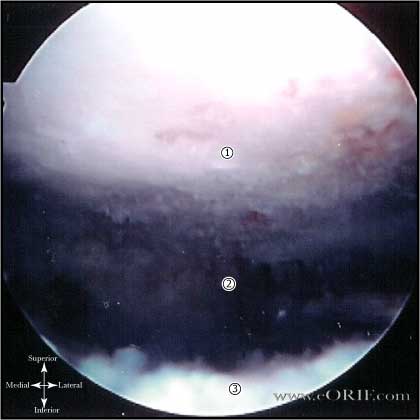
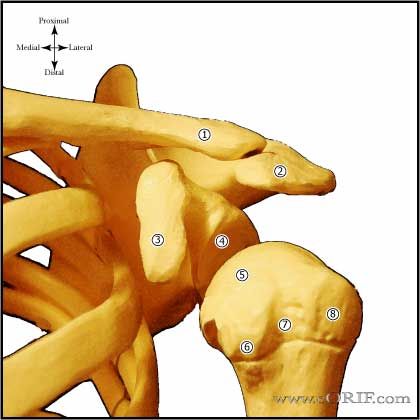
|
synonyms: rotator cuff disease, anterolateral shoulder pain syndrome. subacromial impingement, subacromial bursitis, rotator cuff tendinitis
Subacromial Impingement ICD-10
Subacromial Impingement ICD-9
- 726.10 (Disorders of bursae and tendons in shoulder; Rotator cuff syndrome)
Subacromial Impingement Etiology / Epidemiology / Natural History
- The compression and abrasion of the greater tuberosity, RTC, and long head of the biceps tendon by the anterior acromioin, coracoacromial (CA) ligament and undersurgace of the AC joint during forward flexion.
Subacromial Impingement Anatomy
- CA ligament is usually composed of anterolateral band and a posteromedial band. Anterolateral band extends posteriorly on the acromial undersurface and beyond the anterolateral corner of the acromion. (Soslowsky, Clin Orthop 1994;304:10). Incomplete release can result in clinical failure.
- Deltoid attachment to acromion is direct, without periosteal sleeve. 4-mm inferior acromioplasty removes 41% of deltoid fiber attachement, 6-mm = 69%. (Torpey BM, Am J Sports Med 1998;26:379-383).
- Subacromial bursa is under anterior 1/3 of acromion.
- The subacromial bursa is the major component of the subacromial gliding mechanism and contains free nerve endings, Ruffini endings, Pacinian corpuscles, and two kinds of unclassified nerve endings. (Ide K, JSES 1996; 5: 371).
- The largest concenontration of pain fibers in the shoulder is in the bursa, followed by the rotator cuff tendon and the biceps tendon. (Soifer TB, Arthroscopy. 1996;12:182).
- Impingement occurs with exercises such as behind the neck presses, behind the neck pull-ups, triceps pullovers, wide-grip bench press and wide grip pull-downs. These exercises should be avoided.
- See also Shoulder Anatomy
Subacromial Impingement Clinical Evaluation
- Chronic pain localized to anterior or lateral shoulder +/- radiation down the lateral arm to the deltoid insertion
- Exacerbated by overhead activity.
- +/- night pain. Constant night pain is more indicative of Rotator Cuff Tear.
- May have limitations in FF, abduction and IR
- Characteristic painful arc form 60-120 degrees of elevation, especially with letting arm descend from full elevation
- Neer’s Impingement Sign= anterior, lateral or deep pain caused by greater tuberosity impinging on acromion during forced forward elevation. Best tested with examiner standing behind pt preventing scapular rotation with one hand
- Hawkin'ssign = pain caused by maximal internal rotation with the pts arm forward flexed to 90 and elbow flexed to 90 which impinges GT on acromion.
- Neer Impingement test = positive when subacromial injection of 10ml of local anesthetic (lidocaine) releaves previous pain of Impingemnt sign.
- ROM should be nearly normal. If restricted in internal rotation consider Posterior Capsular Contracture If restricted in all planes consider Adhesive Capsulitis.
- Evaluate for subtle atrophy, swelling, or deformity.
- Perform a neurovascular examination of both upper extremities, strength examination, and examine the cervical spine and elbow.
Subacromial Impingement Xray / Diagnositc Tests
- True A/P (Grashe), axillary, supraspinatus outlet view. Evaluate axillary view for os acromionale
- Assess acromial morphology on suprapinatus outlet view. Type 1=flat. Type 2=downward curved, Type 3=hooked
- MRI indicated to assess for RTC tear, muscle atrophy, acromial morphology/impingement, long head of biceps tendon, SLAP lesions, AC arthritis. MRI most helpful with intra-particular gadolinium
- Ultrasound can be used if an experienced operator is available.
Subacromial Impingement Classification / Treatment
- Initial treatment is rest, RTC and periscapular muscle strengthening (Kuhn JE, JSES 2009;18:138), ice, modalities, NSAIDS, subacromial injection(up to 3 in a year: CPT=20610). Corticosteriod injections significantly weaken Rat RTC tendons at one week which retuns to normal by 3 weeks (Mikolyzk DK, JBJS 2009;91:1172).
- Subacromial Decompression is indicated if no lasting improvement occurs after 3-6 months of non-op treatment
- Subacromial Injection: steroid: 40 mg triamcinolone +/- marcaine/lidocaine. Consider 60 mg ketorolac which is equivalent if not superior without detrimental effects of steroid. (Min KS, J Shoulder Elbow Surg. 2013 May;22(5):595-601)
Subacromial Impingement Associated Injuries / Differential Diagnosis
Subacromial Impingement Complications
- Pain(most common)
- Infection
- Bleeding
- Neurovascular injury
- Adhesive Capsulitis
- Instrument breakage
- CRPS
- Heterotopic ossification
- Recurrence of spurs
- Synovial fistula
- Acromion Fracture
Subacromial Impingement Follow-up Care
- Techniques and associated procedures vary widely making reported results variable. In general pts can expect 80-90% excellent to good results for arthroscopic SAD for Stage II subacromial impingement
- Post-op pain control with narcotics, NSAIDS, ice
- Immediate pendulum ROM exercises with gradually increased activities as tolerated. Because deltoid is preserved no significant activity restrictions are needed.
- PT for ROM. No significant difference between self-training or therapist guided rehab program. (Anderson NH, JSES 1999;8:99-101).
- CA ligament may regenerate in the long term (Levy O, JSES 2001;10:317-20).
Subacromial Impingement Review References
|








